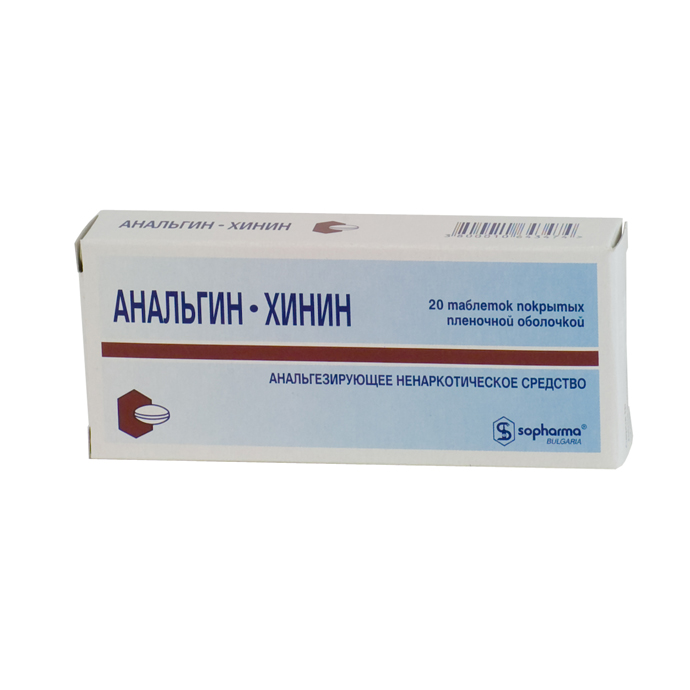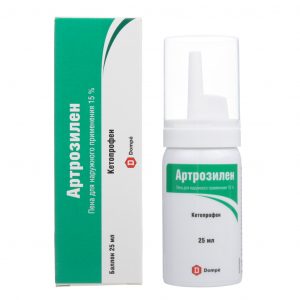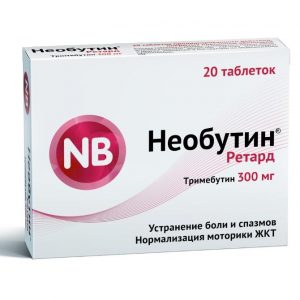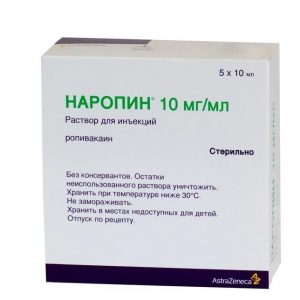Description
Release form
tablets
Packaging
10 pieces per pack.
Pharmacological action
Analgin-quinine – a combined drug.
Metamizole sodium is a derivative of pyrazolone and has an analgesic, antipyretic and weak anti-inflammatory effect, the mechanism of which is associated with inhibition of prostaglandin synthesis due to inhibition of COX.
Quinine depresses the center of thermoregulation, in high doses – the auditory and visual zones of the cerebral hemispheres.
Quinine also inhibits the development of erythrocyte forms of schizonts and gamonts of malaria, inhibiting DNA replication, and has a local irritating and local anesthetic effect.
The pharmacological effect develops 20-40 minutes after taking the drug and reaches a maximum after 2 hours.
Indications
Pain syndrome of various etiologies, including:
headache,
neuralgia,
arthralgia,
myalgia,
myositis,
algomenorrhea,
postoperative pain,
renal and biliary colic (in combination with antispasmodics).
Fever in infectious and inflammatory diseases.
Contraindications
Severe hepatic impairment.
severe renal impairment.
bronchial asthma.
asthma caused by taking salicylates or other NSAIDs.
diseases accompanied by bronchospasm.
hereditary hemolytic anemia caused by glucose-6-phosphate dehydrogenase deficiency.
inhibition of hematopoiesis (agranulocytosis, neutropenia, leukopenia).
severe myasthenia gravis.
diseases of the middle and inner ear, hearing loss.
optic neuritis.
children under 12 years old.
hypersensitivity to the components of the drug, as well as other pyrazolone derivatives.
With caution, the drug should be prescribed in the following cases:
hypersensitivity to other NSAIDs,
for food, drug or other forms of allergies (including hay fever, bronchial asthma),
granulocytopenia (monitoring of hematological parameters is necessary).
Use during pregnancy and lactation
Contraindicated in pregnancy and lactation.
Composition
Active substance: sodium metamizole (as 100% hydrochloride, 200 mg) mg
Excipients: microcrystalline cellulose (Avicel PH 101) (75.00 mg), sodium carboxymethyl starch (Primogel) (26.00 mg), colidone-25 (povidone) (3.00 mg), talc (5.00 mg) magnesium stearate (1.00 mg).
Shell composition: talc (4.10 mg), titanium dioxide (1.3005 mg), eudragide L 12, 5 P (methacrylic acid and methyl methacrylate copolymer) (1.6832 mg), macrogol 400 (1.100 mg), glycerol (0.280 mg), castor oil (0.036 mg), pigment green dye (quinoline yellow dye E 104 + blue patented V E 131) (0.0001 mg).
Dosage and administration
Duration of the drug (without consulting a doctor) as an antipyretic agent – no more than 3 days, as an analgesic agent – no more than 5 days.
Tablets should be taken without chewing after eating.
Adults and children over 14 years of age are prescribed 1-2 tablets. 1-3 times / day depending on the clinical picture.
For children aged 12-14 years – 1 tab. 3 times / day
Side effects
Allergic reactions: skin rash, itching, Quincke’s edema rarely – anaphylactic shock.
From the digestive system: nausea, vomiting, pain in the epigastric region.
From the side of the central nervous system: headache, tinnitus and hearing loss, impaired vision, dizziness, fatigue.
From the cardiovascular system: angina pectoris, heart rhythm disturbance.
From the hemopoietic system: with prolonged use – thrombocytopenia, leukopenia, agranulocytosis, hypoprothrombinemia.
Other: impaired renal function, bronchospasm, fever.
Drug Interaction
Co-administration of metamizole sodium with other antipyretic analgesics may lead to mutual enhancement of toxic effects.
Tricyclic antidepressants, oral contraceptives, allopurinol impair the metabolism of sodium metamizole in the liver and increase its toxicity.
Barbiturates and phenylbutazone attenuate the effect of sodium metamizole.
Sedatives and tranquilizers enhance the analgesic action of sodium metamizole.
Metamizole sodium enhances the action of ethanol-containing beverages.
Metamizole sodium, by displacing oral hypoglycemic drugs, indirect anticoagulants, ACS, and indomethacin from the protein association, enhances their action.
Quinine can potentiate neuromuscular blocking agents.
Quinine increases the concentration of digoxin in blood plasma and enhances its action.
Cimetidine decreases clearance and increases T 1/2 quinine.
Concurrent administration of Analgin-quinine with cyclosporine reduces the latter’s level in the blood.
Microsomal oxidation inducers accelerate metabolism and reduce drug efficacy Microsomal oxidation inhibitors increase the efficacy and risk of side effects.
Co-administration with thiamazole and sarcolysin increases the risk of leukopenia.
Codeine, propranolol enhances analgin-quinine action.
Overdose
Symptoms: nausea, vomiting (including bloody), melena, epigastric pain, agranulocytosis, aplastic anemia, hemorrhagic diathesis, dizziness, tinnitus, clonic and tonic convulsions, cardiotoxic effect, skin rash (bullous, petechial, bark or typhoid), anaphylactic shock, coma is possible.
Treatment: gastric lavage, prescription of laxative and gastroprotective drugs, forced forced diuresis, restoration of breathing, antitussive measures, recovery of OCC if necessary – symptomatic therapy, in the development of convulsions – in / in barbiturates and diazepam. There is no specific antidote.
Storage conditions
The drug should be stored in a dry, dark place at a temperature of no higher than 25 ° C.
term life
5 Chron
Deystvuyuschee substances
metamizol sodium
dosage form
dosage form
tablets
Sofarma Bolgaria




